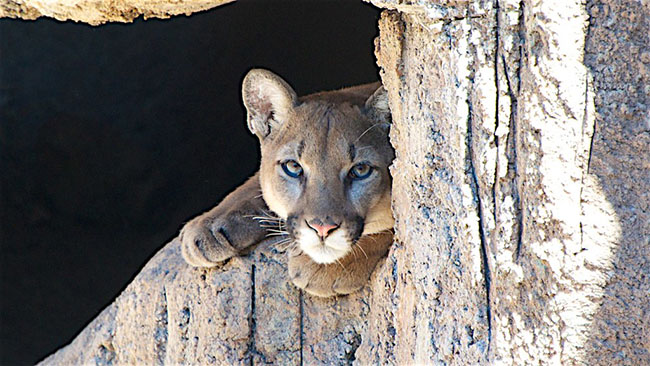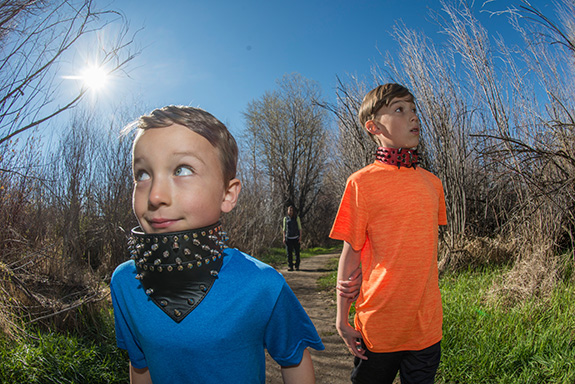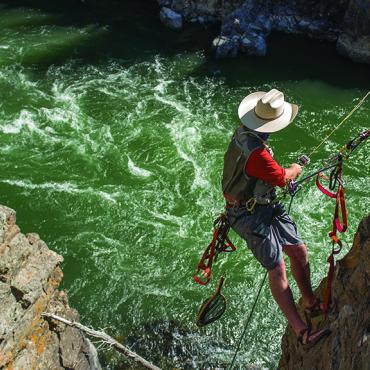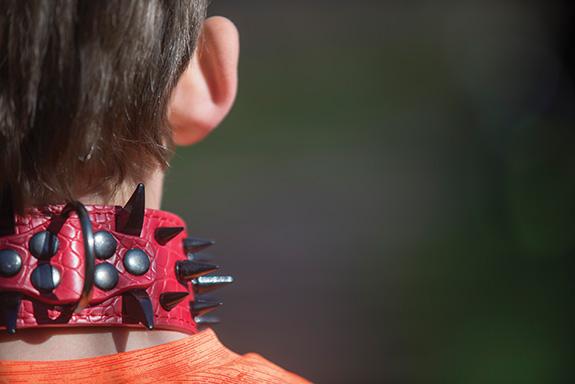Lion in Wait
Cougar collars save lives.
While historically rare, human encounters with mountain lions are on the rise across Montana. Lions typically hunt deer and avoid contact with humans. But as housing and recreation pressures continue to push into traditional cougar country, conflicts—and occasionally, attacks—naturally increase.
Zoe Olgist, a longtime wildlife biologist with the state, explains the phenomenon. “These big cats are struggling for survival out there,” she says, “and hunger leads to desperation. Especially when they see people of smaller stature, like children. Cougars are crafty opportunists that minimize effort and risk in their pursuit of prey.” In other words, to a peckish puma, an unsuspecting child looks a lot like a Big Mac—quick, easy, and delicious.
So what can we do to protect ourselves and our loved ones while out on the trails? In addition to common-sense strategies for recreating in catamount country—traveling in groups, avoiding trails at dawn and dusk, and learning key self-defense techniques—a new passive-protection device has hit the market, designed for outdoors-folk of all ages.
Currently endorsed by state agencies, the Feline Attack-Repellent System (FARS) is the recommended response to what some are calling “the cougar crisis.” Designed by pepper-spray pioneer Moy P. Kontie, these Kevlar-reinforced, steel-spiked collars protect a person’s throat, which is a mountain lion’s primary target. “I started studying lion attacks,” Kontie explains, “and quickly discovered that they always go for the jugular, subduing their prey by asphyxiation. Suddenly it hit me—if we can thwart a bear with mace, why can’t we foil a cougar with spikes?”

Kontie purchased a dozen commercially-available collars for testing. “We started out with the normal, run-of-the-mill spikers,” he says, “the ones rednecks put on pit-bulls, or that weirdos use in bed.” After three months of R&D with a Conibear trap, he had a prototype. “My neck hurt like hell,” he points out, “but I was alive. Alive! I knew right then and there that I had a winning product.”
That was two years ago, and now, not only does the FARS provide protection, it comes in a variety of sizes, styles, and finishes, making it an edgy trend in outdoor fashion. The collars’ stainless-steel spikes are available in various lengths, and collar materials range from classic black leather to tweed and even alligator-skin models. Camouflage patterns are available for sportsmen, an especially high-risk demographic. “The reason we biologists like FARS,” says Olgist, “is because it’s non-lethal to the lion. Both parties walk away from the encounter—bruised and bloody, for sure, but alive.”
For weight-conscious runners, hikers, and mountain bikers, the FARS Lite has titanium spikes that reduce weight by 40% without compromising strength or effectiveness. Gore-Tex membranes offer improved breathability. And for crossover customers, there’s an upcoming L.L. Bean edition, wrapped in Italian leather with gold-plated accents. According to Kontie, these models “blend the rawness of the mountains with the refinement of Main Street,” and are sure to be a favorite among the New-Bozeman elite.

High-end collars notwithstanding, Kontie is quick to remind people that youth are a panther’s primary target. “We designed this system to protect children,” he says, “and that’s where our core values remain.” With this in mind, the company offers a range of cartoon patterns; the Lion King version is particularly popular. For additional security, the FARS Jolt includes an electronic module activated by remote control. At the push of a button, a parent can send 10,000 volts of electricity through the spiked collar directly into the jaws of an attacking lion. A separate radio channel directs a lower voltage into the neck of the child, for training applications. “It may sound extreme,” Kontie cautions. “But it’s better than becoming cougar poop—or an obnoxious teenager, for that matter.”

Given the success of FARS, Olgist and the state wildlife board have contracted Kontie to explore other passive protections. His latest breakthrough? Harnessing the territorial marking method employed by lions themselves: pee. “Human urine has remarkable lion-deterrent potential,” Kontie says. “Best of all, it’s safe, easy, and free. Pee on your buddy before a backcountry run and you’ll both feel better. Headed out for a hike with the kids? A squirt of piss goes a long way toward making the day safer and more fun for everyone.”
Of course, neither wearing a cougar collar nor peeing all over yourself can guarantee absolute safety. “If you’re attacked by a mountain lion, you’re going to be pretty messed up,” Kontie says. “Cougars don’t screw around. They’re going to do a number on you—but you’ll survive.” Olgist agrees. “It may be hard for some folks to get used to the idea,” she says. “But it’s true: FARS is good for you.”
Look for FARS cougar collars at outdoor stores, fish & wildlife offices, and local adult shops. For more info and detailed photos, visit cougarcollars.com.













